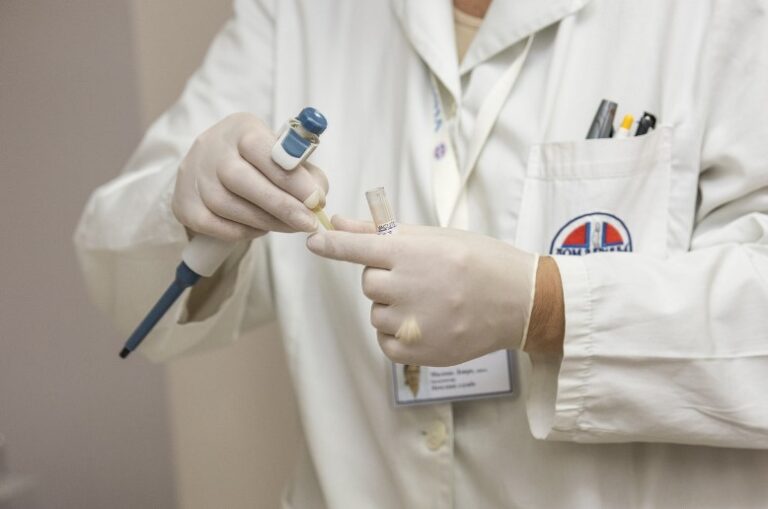Navigating the complexities of health and wellness is a journey marked by various experiences, some of which are more challenging than others. Among these, undergoing an STD test stands out as a particularly sensitive and emotionally charged endeavor. The anxiety and anticipation accompanying the wait for results are not just about the outcome but also about understanding the process. This blog post aims to demystify this experience by providing you with ten essential insights into the timeline of STD test processing and results. These insights will offer clarity, understanding, and a sense of control during what can often be a tense and uncertain time.
Type of Test Matters
The first crucial insight is that the type of STD test you undergo significantly impacts the time it takes to get results. There are various types of STD tests, ranging from rapid tests, which can offer results in as little as 20 minutes, to more comprehensive tests that require several days or even weeks to process. Rapid tests are often used in clinics for quick screening, whereas blood tests or cultures requiring more detailed analysis take longer. Understanding the type of test you’re taking is the first step in managing your expectations and preparing for the wait.
Laboratory Capacity
The capacity and efficiency of the laboratory where your test is being processed play a crucial role in determining how quickly you receive your results. Laboratories with a high volume of tests might have the capacity to process tests quickly, but they can also face backlogs, especially during times of high demand. On the other hand, smaller labs don’t have the same or even similar capacity but can offer more personalized and timely processing.
Specific STDs Have Different Timelines
Each STD has its own unique testing methodology, which influences how long it takes to get results. For instance, tests for HIV might return results faster compared to tests for herpes or HPV, which often require more complex analysis. The biological characteristics of different STDs, such as incubation periods and the presence of detectable markers, also play a part in the test timeline.
Testing Method Accuracy
Some tests take longer because they are more comprehensive. For example, culture tests involving growing bacteria or viruses in a lab might take several days or weeks, but they often provide more accurate results than rapid tests. These tests are particularly important when diagnosing infections that require precise identification of the causative organism for effective treatment.
The Role of Symptoms
If you’re experiencing symptoms, your healthcare provider might prioritize your test.
In cases of acute infections, where immediate treatment is crucial, quicker testing methods are often employed. This not only aids in prompt treatment but also helps in the effective management of the STD to prevent further transmission.
Impact of Location and Accessibility
Your geographic location and the accessibility of testing facilities can also influence the waiting time for results. In urban areas with multiple testing centers, including clinics and family urgent care facilities, results might be available sooner due to better resources and infrastructure.
The Influence of Health Insurance
The coverage provided by your health insurance can influence where you get tested and, consequently, how quickly your results are processed. Some health insurance plans have partnerships with specific laboratories, which might have different processing times than others. Understanding your insurance coverage and how it might affect your experience is essential.
Importance of Follow-Up
Sometimes, an initial test might lead to the need for further testing, which can affect the overall timeline for getting your final results. Follow-up tests are crucial for ensuring an accurate diagnosis and an appropriate treatment plan. This is especially true for STDs that might have a window period or require confirmation tests.
Technological Advances
Technological advancements in medical testing are continually shortening the time it takes to get STD test results. Automated testing methods, improved diagnostic tools, and digital reporting systems are examples of how technology streamlines the testing process. These advancements not only reduce the wait time but also improve the accuracy of the results.
Emotional and Psychological Factors
The emotional weight of waiting for STD test results cannot be underestimated. It’s common to experience anxiety, stress, and a host of other emotions during this period. These feelings are valid and understandable, given the sensitive nature of STD testing.
It’s important to acknowledge these emotions and seek support from friends, family, or mental health professionals. Remember, taking an STD test is a responsible step toward maintaining your health and well-being, and it’s okay to seek help in navigating this process.
Conclusion
Waiting for the results of an STD test can be a period filled with uncertainty and emotional turmoil. However, understanding the various factors that influence the processing time can help manage expectations and reduce the stress associated with the wait. No matter the outcome, remember that you are taking a responsible and essential step towards your health and well-being. Talk to professionals, friends, or family if you have concerns or need support.
